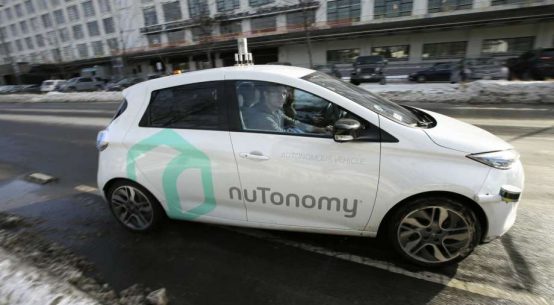
Technology focused on charging electric vehicles while they are moving, not standing still
The Economist -More than half a dozen large carmakers, including Audi, Ford and Volvo, are soon expected to begin selling electric vehicles (EVs) that can be charged wirelessly. For between $2,500 and $4,000, existing EVs can already be retrofitted with the relevant kit. What promise does such technology hold for the automotive industry?
The wizardry requires two coils made of copper and ferrite, a magnetic compound. One coil sits in a case that resembles a manhole cover and which is placed on, or in, the ground. The other is fixed to an EV’s undercarriage.
Imagine your ad placed here
When the vehicle is stopped so the two coils are roughly aligned, electricity fed to the bottom one generates an electromagnetic field in the air above, which the upper coil absorbs. This alternating current is converted by a rectifier into direct current that charges the vehicle’s battery.
Inventors have been able to move electrical power across air gaps since the early 19th century. But only in recent years has inductive power transfer, as it is known, become practical for vehicle batteries. It is a result of advances in power electronics—things like insulated-gate bipolar transistors, a type of semiconductor switch that greatly boosts a current’s voltage and frequency.
But charging wirelessly is no more electrically efficient than using a cord. With the former, some power is lost to the air gap; with the latter, power is lost to a transformer needed to prevent surges. So why are manufacturers investing in the new technology?
For starters, they believe that the elimination of charging cords (which are sometimes stolen for their copper) and the tower consoles to which they are attached (which are sometimes smashed by careless drivers) will lead to the establishment of more charging stations. EV drivers will welcome, it is thought, the ability to top up by using a smartphone to locate, reserve and rent charging pads while parked for a quick errand or overnight, without needing to fuss with a cord.
And the technology could pave the way for fleets of driverless EVs that can be summoned with an app. No fleet operator will want to pay for robots or employees to plug cords into autonomous taxis. Perhaps most importantly, cutting the cord allows EVs to charge on the move.
Follow us on TWITTER for more Logistics News Follow us on FACEBOOK for more Logistics News
At three sites in South Korea, trams and buses charge as they drive over a series of embedded coils that are sequentially flooded with pulses of electricity as a vehicle passes overhead.

Renault is helping to test this technology in Versailles, near Paris. And Israel’s transport ministry is funding a test on a short stretch of a street in Tel Aviv.
If about a sixth of an EV’s route were electrified in this way, it would never need to stop for a charge.
This is heady stuff, to be sure. Some of the excitement is fuelled by early backers keen to crown themselves with the “nice green halo” conferred by associating with environmentally friendly tech, admits Jeremy McCool, boss of HEVO, a maker of wireless-charging systems.
Just how fast wireless charging catches on, in whatever form, will depend mainly on how the economics shake out.








